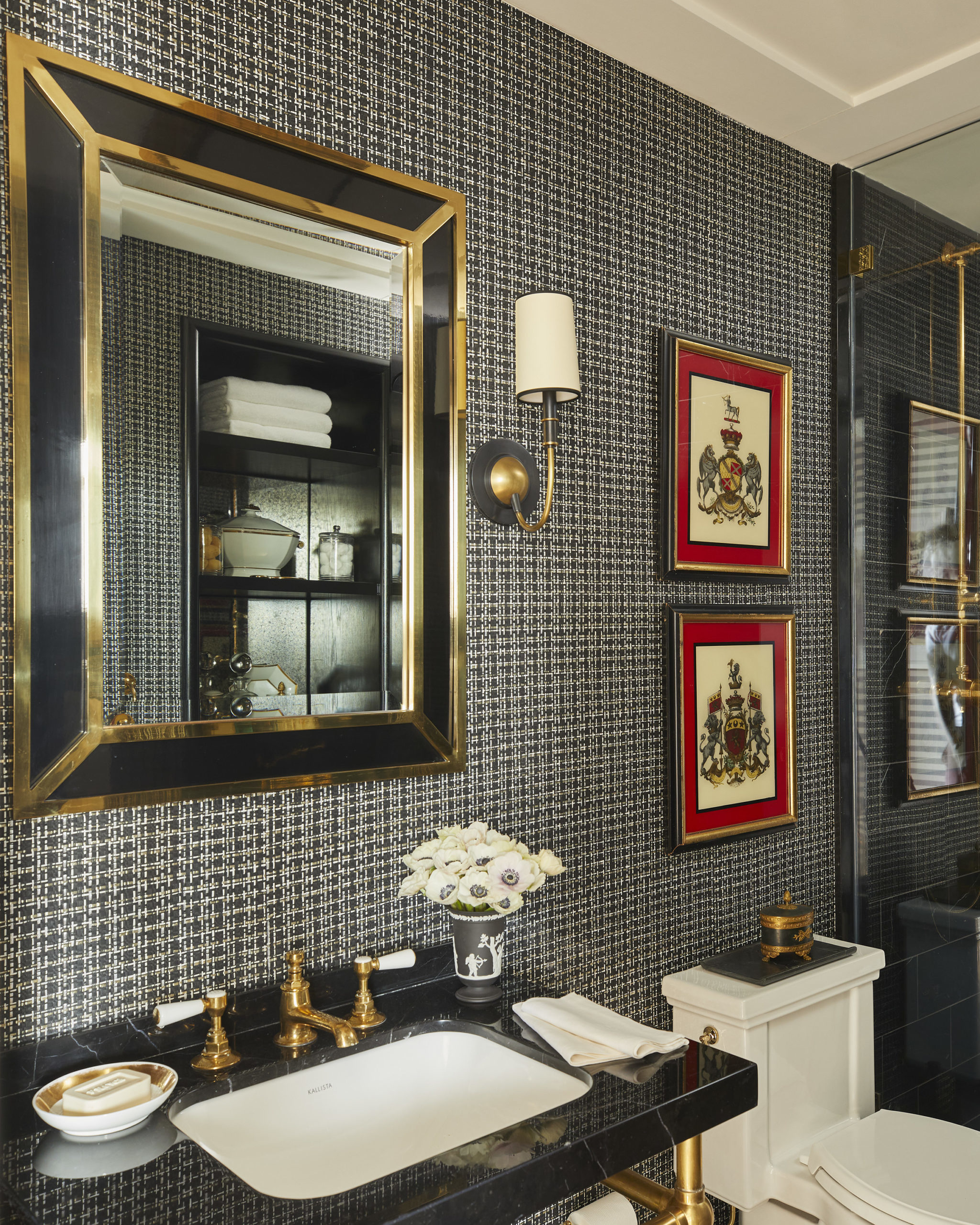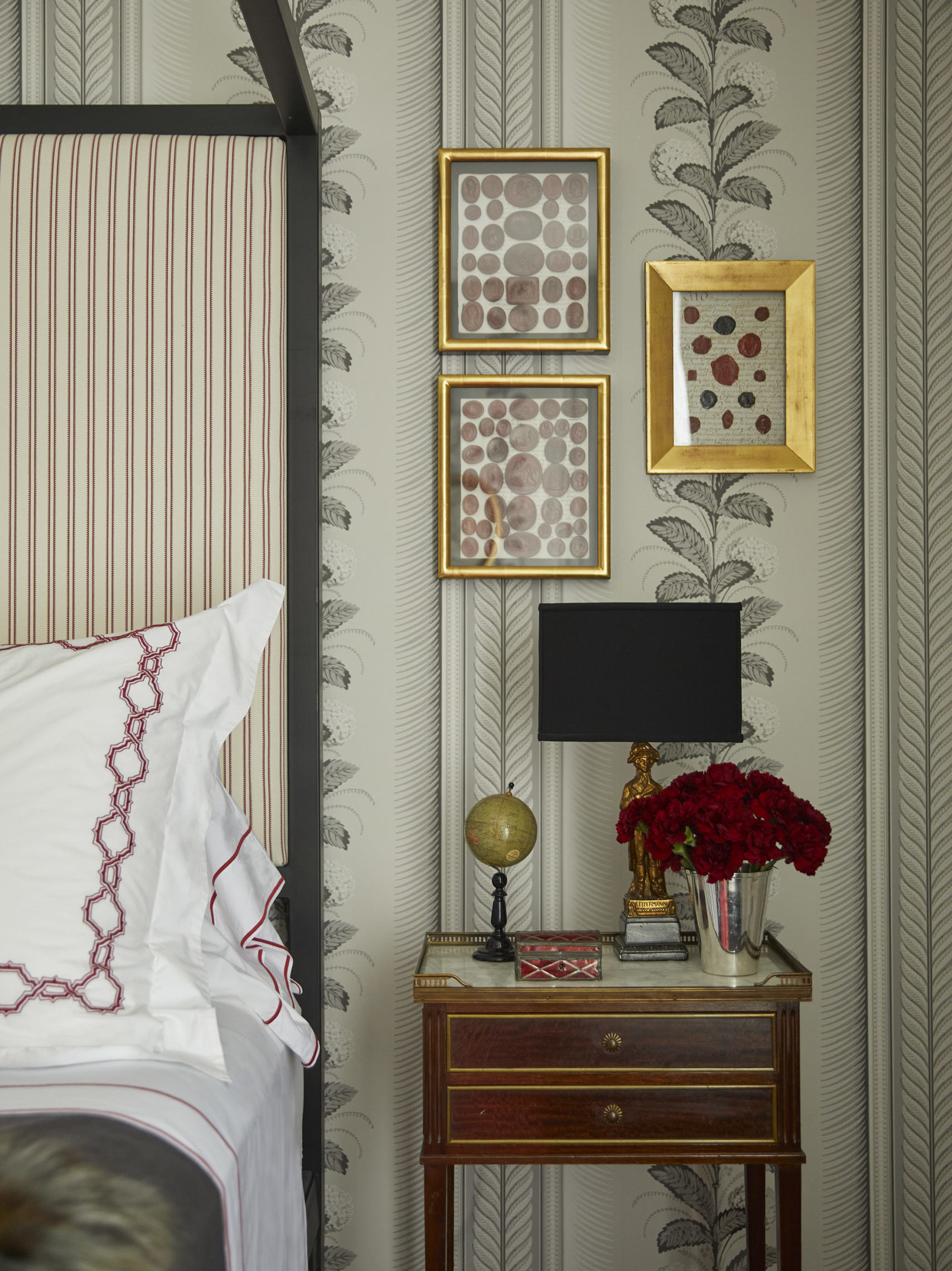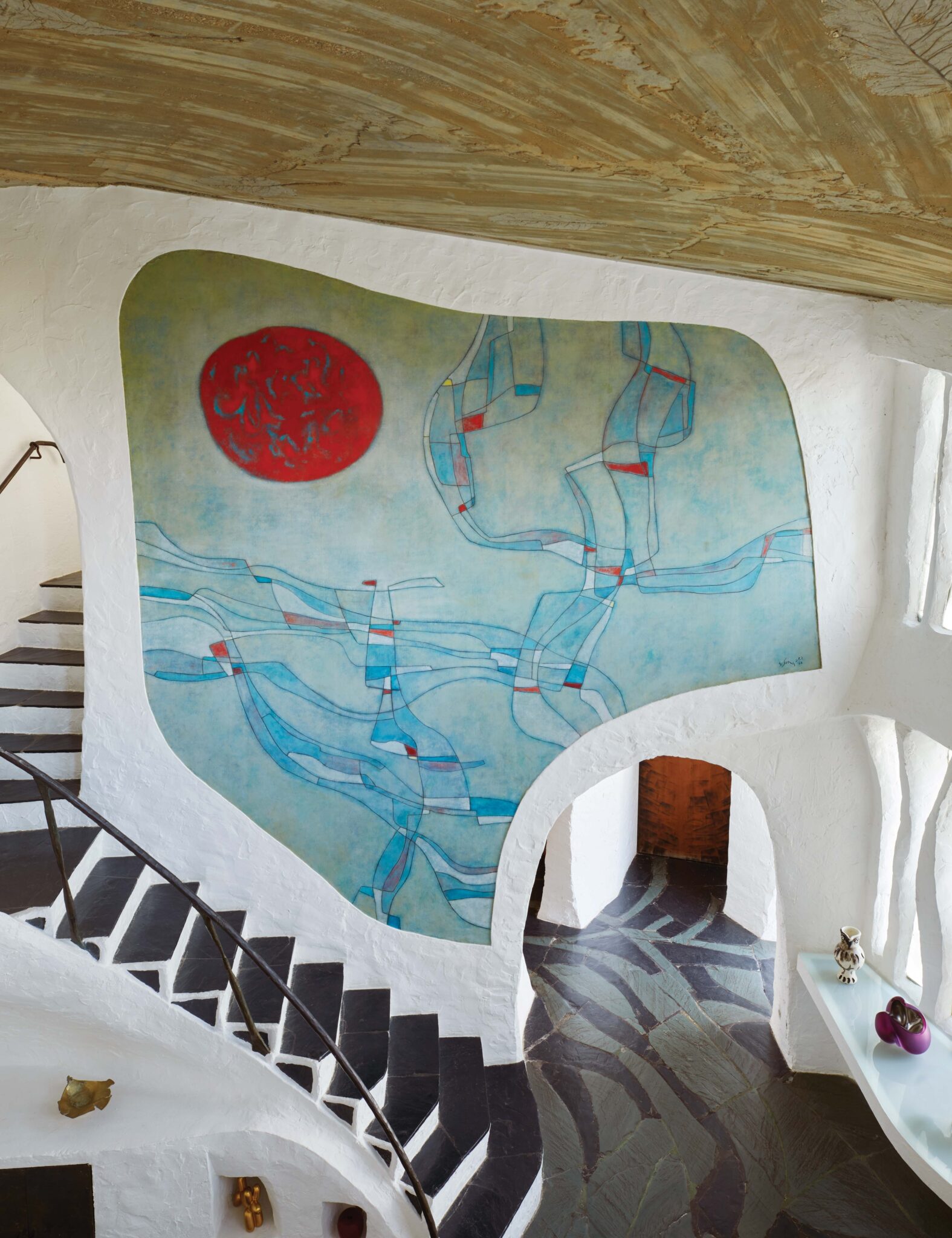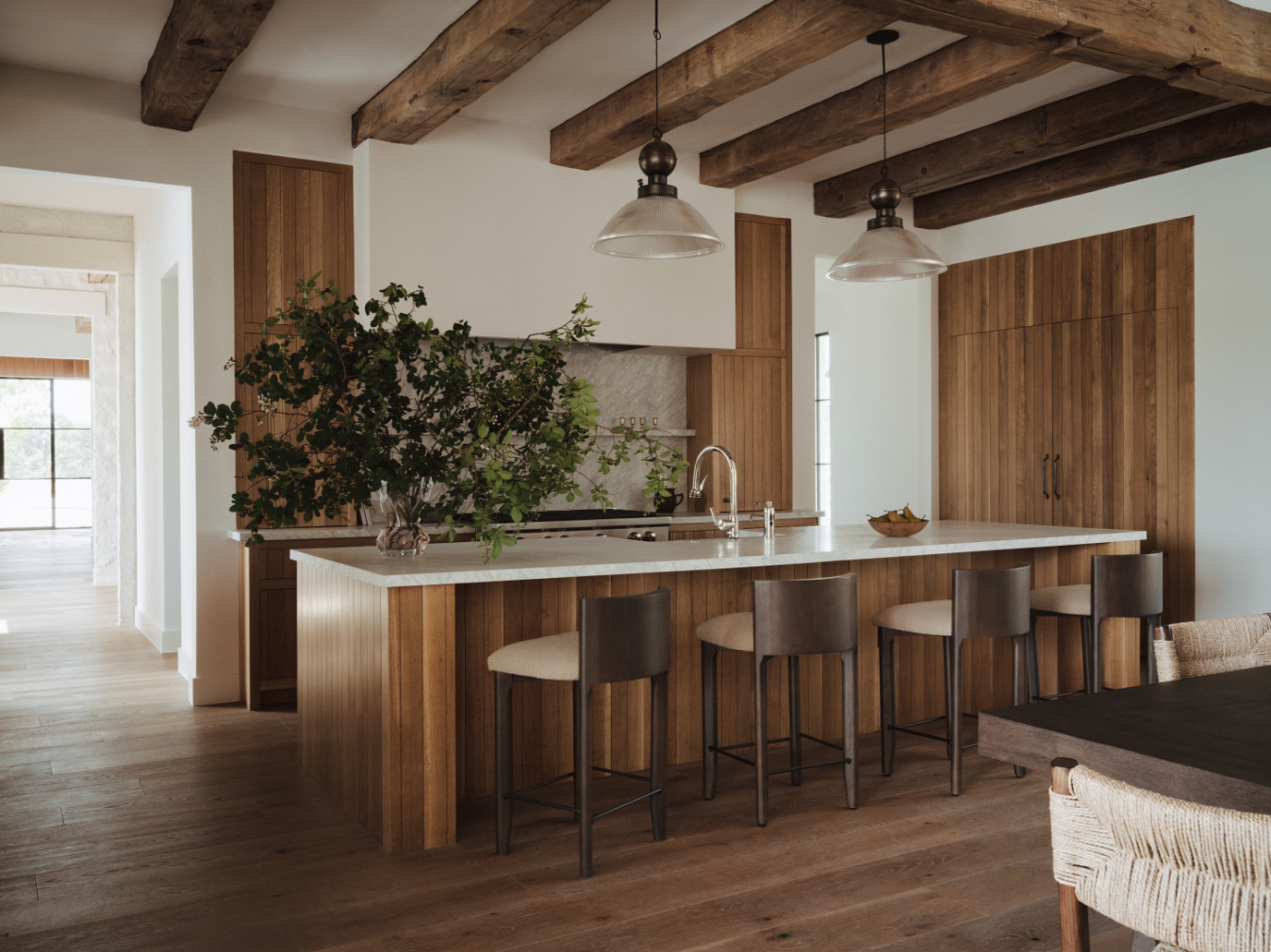Wish fulfillment can be a tricky thing. Take, for example, John Bossard’s handsome new home in Atlanta’s Plaza Towers, a set of commanding high rises on Peachtree Road affectionately known in creative circles as the city’s decorating dormitory. When Bossard first saw Plaza Towers more than 20 years ago, he knew instantly that, someday, he wanted to live in the iconic 1969 Brutalist buildings. The native Georgian finally got his wish when he relocated from New York several years ago.

Designer John Bossard fell hard for the deeply inviting texture of a Phillip Jeffries wallcovering, which he used in what was meant to be a dining room in his Atlanta home—but the shade felt so rich and intimate that he turned it into a library lounge instead. The atmosphere of the Hotel Costes and a pair of vintage chinoiserie decalcomania lamps provided design inspiration for the space, which has the louche good looks of a movie set. The screen, bought years ago from a dealer, converses thoughtfully with an abstract canvas by P.R. McIntosh. The side tables are Brian Kane for Metropolitan Furniture Corporation, and the Maison Jansen–style lacquered coffee table is a vintage piece.
Francesco LagneseThe cruel twist? He moved in on March 8, 2020, just as the pandemic was shutting everything down. “I had the essentials, but I was really camping out in my own space,” says Bossard. But what a space it was, with huge nine-foot windows, balconies that wrapped around the exterior, and minimal support columns that allowed him to design his ideal floor plan with architect Stan Dixon—a floor plan which, it’s worth noting, rejects the current fashion for open kitchens and entertaining spaces in favor of lots of closets and distinct areas for dinner, for drinks, and for lounging. Finishing the job took months longer than Bossard ever imagined—and required smuggling in wallpaperers and painters during the lockdown—but the resulting rooms successfully synthesize modern and traditional into a rich, colorful, art-filled reflection of his most difficult client: himself.

In his living room, Bossard silenced the walls with a coat of white paint and gave all the speaking roles to his collections. The strong ensemble cast includes a LaVerne cocktail table, an artist’s studio bench found in East Hampton, a groovy curved ottoman, and tabletop sculptures by ceramic artist Scott DeHart.
The lush purple and peacock of Bossard’s library lounge is the perfect manifestation of the look he wanted. Although intended as a dining space, Bossard felt compelled to create a more intimate gathering place instead. His starting point? The tone-on-tone drama of textured wallpaper in a moody hue that channels the Hotel Costes in Paris. “It’s such a sensory experience, and I wanted to create that for myself,” he says. The large paneled screen was unearthed later in Bossard’s storage space: “You would think I designed the room around it, but I’d forgotten I had it. When I pulled it out, I was like wow, this will work.” Then came the velvet upholstery in a shade that “doesn’t necessarily match,” he says. “It’s Napoleonic in its richness. There’s something about it that I find so handsome.” The mix of modern art, chinoiserie, and French accessories created just the mood he wanted: dark and lavish and mysterious.
The living room, in contrast, is all white walls, creating a quiet background that keeps the focus on Bossard’s trove of small-scale art and objects. “Collecting is a huge part of what I do,” he explains. “Some people go to movies; I go to antique malls—I have way more things than I could ever need, but I want to honor them all.” The sole embellishment: a thin line of grosgrain ribbon punctuating the ceiling like a quiet exclamation point and enhancing the depth of the room. Because the apartment boasts the kind of classic framework found in a prewar building, the many different eras represented in the room blend into a timeless whole. The brass-and- bronze LaVerne cocktail table was a prized find, which stands in opposition to the Louis XIV-style mahogany secrétaire à abattant, while a classical sculpture holds court with a 1970s coffee table. Beautiful objects fill in every corner, including ceramics and treasured artworks made by friends.
Bossard’s passion for art continues in his dressing room— where canvases cover the gentlemanly striped walls—and in the kitchen, where he hung a work by his friend Emily Hoerdemann. “I wanted a cocktail lounge, not a kitchen, because I had no intention of cooking,” says Bossard of the sexy space, which he closed off and significantly reduced in size from the original footprint, hiding a huge pantry and small appliances behind a porthole door. “But I learned how to cook by necessity during the pandemic, and it’s very functional.”
-

A painterly lampshade by Ross Alexander through Harbinger sits atop a vintage lamp and Made Goods bedside table; the bedding is Matouk.
Francesco Lagnese -

In the guest bath, Bossard went all-out with black and gold, like the Thomas O’Brien for Circa Lighting sconces and Waterworks fixtures.
Francesco Lagnese
The designer felt his home would not be complete without a room that acknowledged place—and his own origin story. “I’m from the South, and I wanted to create something with old Southern charm,” he says of the guest bedroom. So he covered the room with Schumacher’s Hydrangea Drape, and added layers of neoclassical armorial finds for a dramatic two-toned palette of red against gray. “The juxtaposition of masculine objects against that romantic pattern fascinated me. I think of it as my own little Southern Empire room.”
And as far as wish fulfillment goes, in the end, those frustrating delays just make the result seem all the sweeter. Declares Bossard, “I wouldn’t change a thing.”

A gentlemanly dressing room doubles as an art exhibitionist’s dream. “The work—like the boom box by Lyle Owerko—is really reflective of me, and I love seeing it as I’m getting ready for a new day,” says Bossard. Vintage dresser and mirror; lamps by Circa Lighting; walls in Opus wallpaper by David Oliver for Schumacher.
Francesco Lagnese-

In the red-on-gray guest bedroom, Bossard conjured a masterpiece that seamlessly blends two opposing forces: Southern charm and neoclassical armorial objects. Schumacher’s Hydrangea Drape wallpaper provides a soft and lush background, while the red Morrison Stripe on the headboard, also from Schumacher, “emulates a strong Napoleonic feeling.”
Francesco Lagnese -

An ebony dresser from Bunny Williams Home is flanked by side chairs covered in Atwood Epingle from Schumacher; a collection of antique helmets, armorial intaglios and French curtain tiebacks surround a bold painting by Kaycee Hughes.
Francesco Lagnese
THIS STORY ORIGINALLY APPEARED IN THE FALL 2022 ISSUE OF FREDERIC. CLICK HERE TO SUBSCRIBE!























